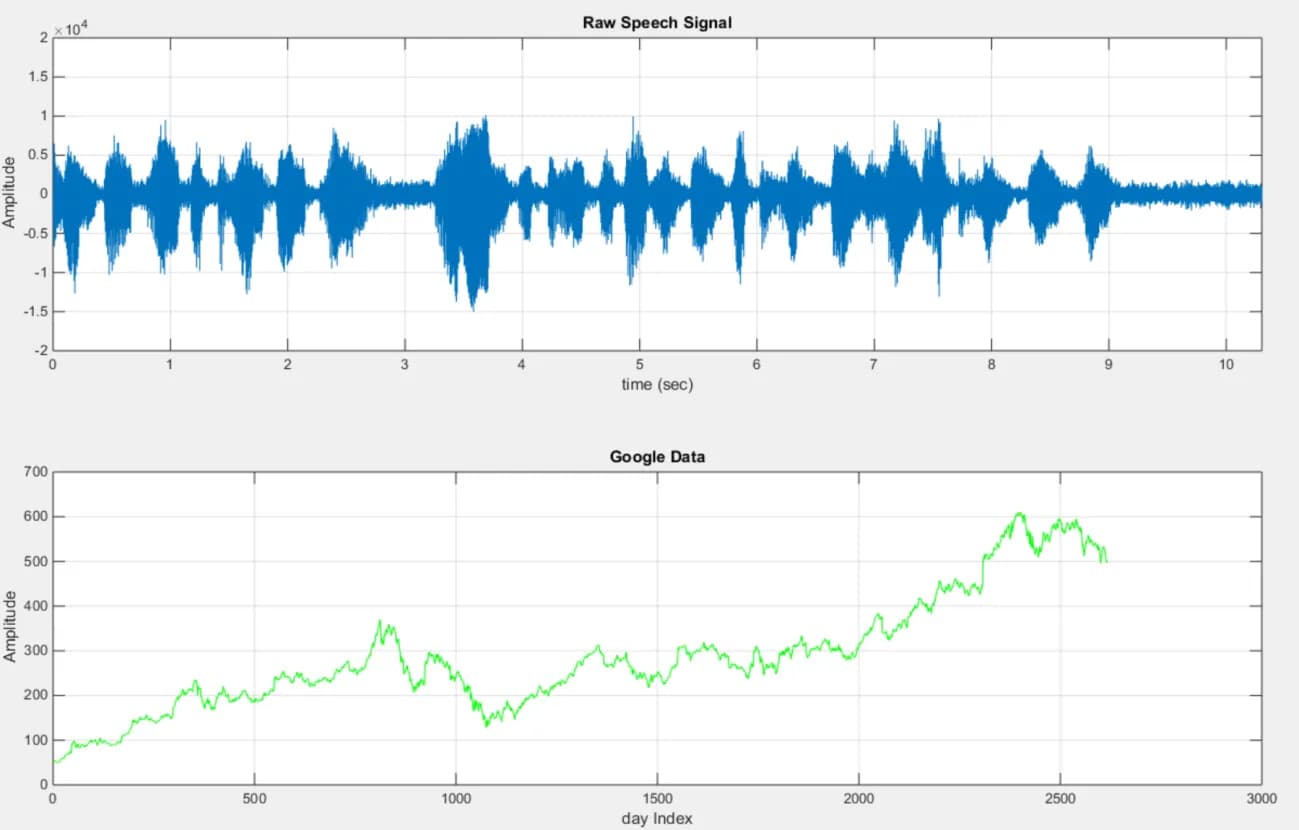
Problem
We want to learn the basics of what mean and variance represent for a given dataset. In this, case we will look at an arbitrary speech signal and Google’s stock data for the past eleven years (2616 days). First we calculate the mean/variance/min/max/median for the entire set of data values which we then use to compare to the mean/variance of smaller sections of data. We explore how to interpreting the mean/variance values for smaller window sizes allows us to see different overall characteristics. We also learn some basics on reading in data from external files into MatLab to utilize MatLab’s built in statistical functions.
Approach and Results
To begin, we load our data into MatLab. To better understand what is happening throughout the data we plot the signals.
Using MatLab’s built in function we find the min/max/mean/median/variance for speech and Google stock data.
Comparing the speech signal to the Google data we see different characteristics between the values. The mean value centers around zero because we have an AC signal with zero DC offset. Therefore, we expect the mean of the signal to be zero. Variance is higher for the speech signal because of radically changing sine wave amplitudes that compose the speech signal. The Google stock price does not have a mean of zero since their stock price does not oscillate around zero like the speech signal. Instead, the Google stock mean shows the average price of the stock over the past eleven years. Recalling that the variance is the standard deviation of a set of data squared, we can take the square root of our variance to see a standard deviation of 127 points. Comparing the standard deviation with the mean we see that most of our data falls between one standard deviation from the mean. Now we will investigate what the mean/variance of the data looks like when we break them up into varying window/frame sizes. First we focus on the speech signal. We break the speech frame sizes of 40, 60, 169 and window sizes of 160 and 240.